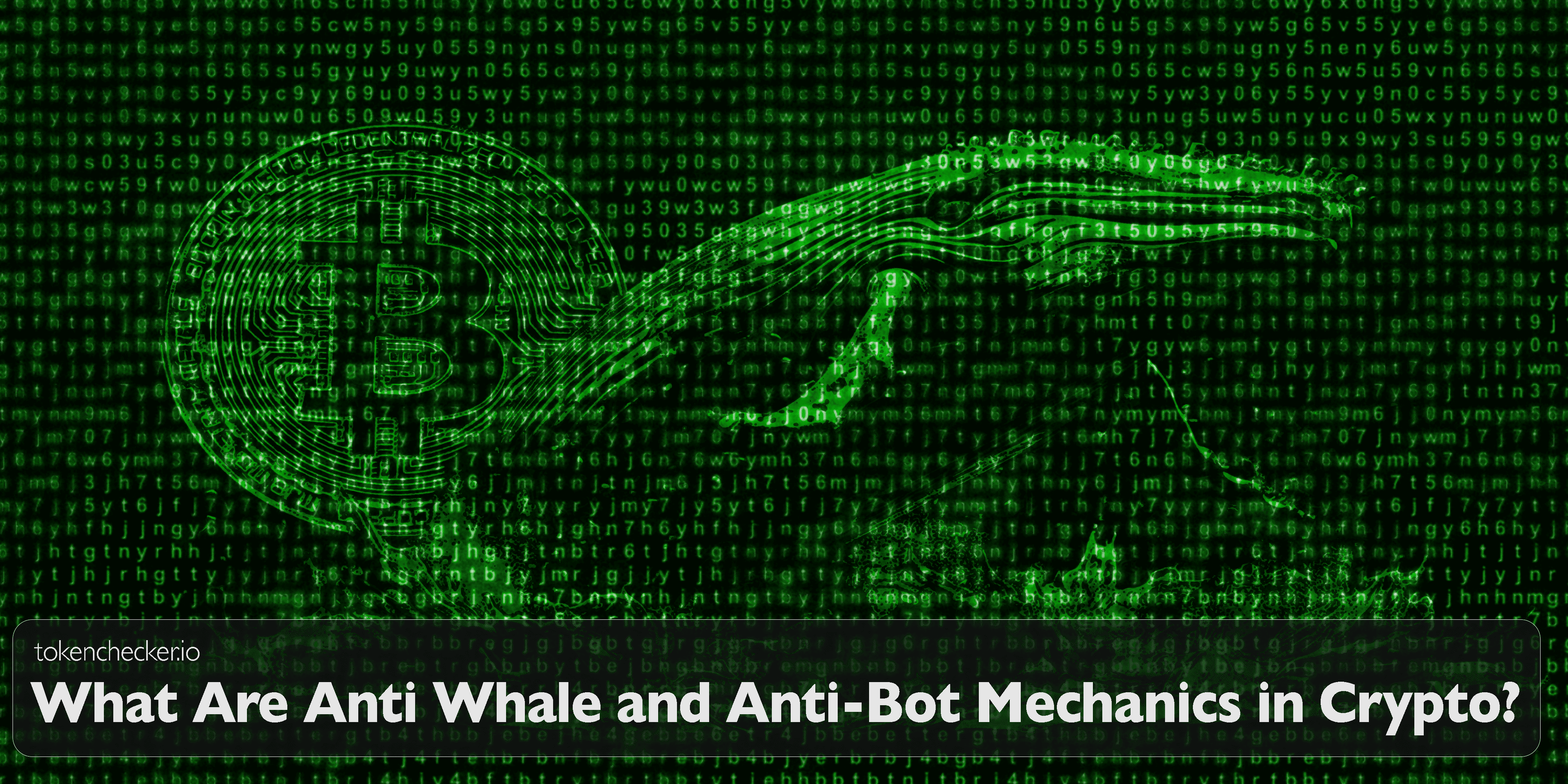
What Are Anti-Whale and Anti-Bot Mechanics in Crypto?
In crypto, fairness isn’t just a design goal—it’s a defense mechanism. As projects grow, they’re constantly threatened by two dominant forces: whales and bots. Whales manipulate prices with massive trades. Bots exploit automation to front-run retail users. To push back, developers embed tools directly into smart contracts called anti-whale and anti-bot mechanics.
These systems don’t stop all manipulation—but they slow it down, reveal hidden behavior, and give regular investors a fighting chance. Let’s break them down.
What Are Anti-Whale Mechanics?
Anti-whale mechanics are features designed to limit the power of wallets that control large portions of a token’s supply. The goal is to reduce price manipulation, panic-selling events, and centralized control from figures like pre-sale whales.
Common Anti-Whale Tools
- Transaction Size Limits: Caps how many tokens can be sent in a single trade. Example: max 0.5% of supply per transfer. Helps prevent massive dumps.
- Ownership Limits: Prevents any one wallet from owning more than a set percentage. Encourages broader holder distribution.
- Voting Power Caps: Limits how much influence whales have in governance. A wallet might be capped at 10 votes, regardless of balance.
- Adjusted Reward Systems: Caps or throttles reward accumulation. Prevents whales from dominating passive earnings, like staking pools.
Examples in Action
Projects like Mountain DeFi and Artificial Supercomputer (ASC) use hard-coded caps to limit wallet size and voting power. Others, like Pulse Drip, apply reward timers so whales can’t hoard emissions unchecked.
Effectiveness & Debate
Supporters argue anti-whale tools protect retail users and reduce volatility. Critics warn they may discourage big capital inflows and create false senses of security. The success of these tools depends entirely on implementation.
What Are Anti-Bot Mechanics?
Anti-bot mechanics are systems designed to stop automated scripts from dominating token sales, sniping liquidity, or executing unfair trades faster than humans ever could.
Common Anti-Bot Tools
- Time Delays Between Transactions: Prevents rapid-fire trades. Useful during token launches to slow down bots.
- Transaction Frequency Limits: Limits how often a wallet can interact with the contract. Reduces spam and congestion.
- Maximum Purchase Limits: Caps the number of tokens one wallet can buy. Often applied during presales and fair launches.
- On-Chain Pattern Detection: Uses contract logic to detect suspicious behavior like identical, rapid buys. Blocks flagged addresses or imposes penalties.
- Web Measures (for dApps): CAPTCHAs, rate limiting, and behavioral tracking help verify human users before transactions are allowed.
Examples in Practice
Synapse Network has implemented adaptive cooldowns and max buy limits during launch windows. Smithii.io provides toolkits for devs to set time-based locks and frequency gates without coding. In both cases, real-world bot detection has significantly reduced early sniping.
Anti-Whale vs. Anti-Bot: What’s the Difference?
| Aspect | Anti-Whale Mechanics | Anti-Bot Mechanics |
|---|---|---|
| Primary Target | Large token holders | Automated trading bots |
| Core Goal | Prevent price manipulation and centralization | Prevent front-running and unfair speed-based execution |
| Common Tools | Transfer caps, ownership limits, vote limits | Time locks, buy caps, transaction throttling |
| Implementation | Smart contracts, governance settings | Smart contracts, DEX launch guards, frontend checks |
| Main Criticism | May reduce capital inflows or liquidity | May block legitimate automation or fail against evolving bots |
Why These Mechanics Matter
In 2024, the NexFundAI scandal involved both whale manipulation and bot abuse. It resulted in a multimillion-dollar pump-and-dump scheme, now under FBI investigation. Without protection, retail investors had no way to compete. Such schemes often create what's known as exit liquidity for the manipulators.
Now in 2025, platforms like Smithii.io, Synapse, and Pulse Drip are setting new standards. They’ve shown that it’s possible to build defenses into the architecture of the token—not just rely on good intentions or post-launch moderation.
How tokenchecker.io Helps
tokenchecker.io scans token contracts for both anti-whale and anti-bot logic. Here’s what you can check:
- Max wallet or transfer caps (anti-whale)
- Mint permissions and ownership toggles (abuse risk)
- Trade timing restrictions or buy cooldowns (anti-bot)
- Sniper detection and holder clustering (bot behavior)
- Voting structure and reward distribution systems
By detecting these patterns before you buy, tokenchecker.io gives you insight into whether a token is trying to be fair or just pretending to be.
Final Thoughts
Anti-whale and anti-bot mechanics are no longer optional—they’re the backbone of modern token security. Whether you're investing in a meme coin or a serious DeFi protocol, understanding these mechanics gives you the power to spot manipulation before it affects you.
They won’t stop every scam. But they make the game harder to rig. And that’s a win for everyone.
Use tokenchecker.io to confirm if a token has the protections you deserve.